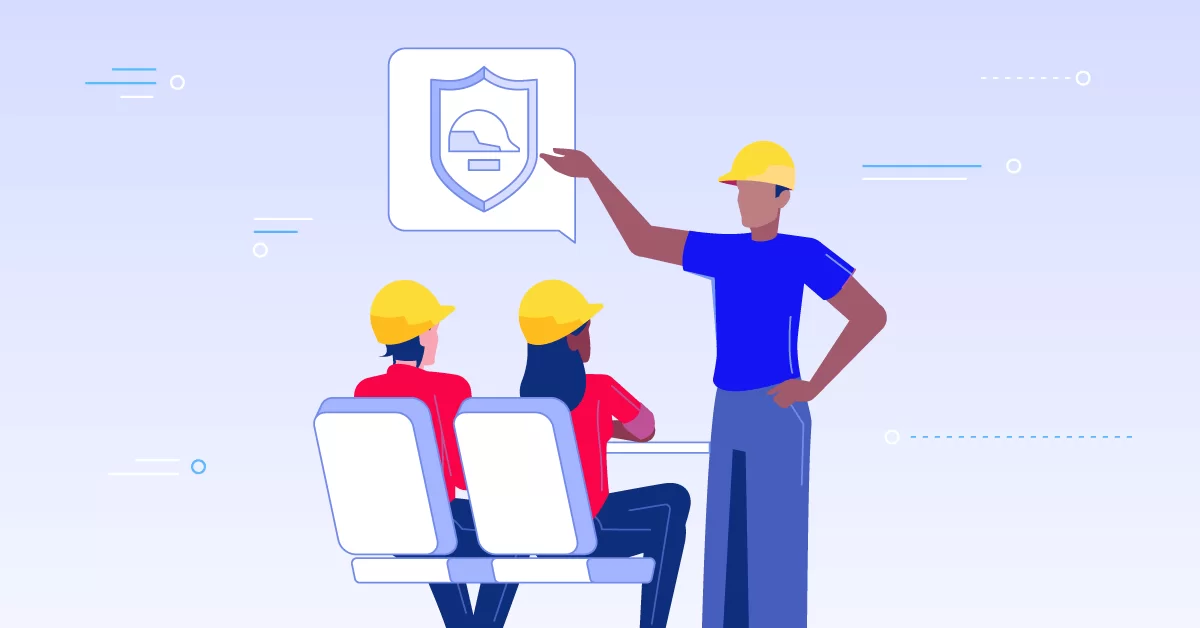If you or your organization are interested in this trend, but do not know how to go about it or need a bit more motivation, read on! We have some interesting facts that reinforce the notion of eLearning solutions as effective knowledge management tools.
Now, rapid eLearning solutions are even more suitable than formal eLearning development. The top reason is that the rapid eLearning development process bypasses the many nuances and scientific methods performed by instructional designers. This does not mean that rapid eLearning produces lower quality results, just that it reaches a certain point of rigor which is absolutely acceptable in most corporate contexts. Rapid eLearning development authoring tools provide predesigned templates and content organization ideas. You just need to have the right content ready!
The question is, why would employees create rapid eLearning? The top reason is to manage newly acquired and experiential knowledge. Often, employees come across new discoveries, innovative methods and successful procedures but fail to share them effectively with peers. An eLearning development platform will encourage employees to create short digital objects that can easily be shared via the corporate intranet. This knowledge would otherwise be hidden – a problem that increases costs in money, effort, and productivity, in an organization.
Need a little more convincing? Promote rapid eLearning in your organization because:
It Empowers Employees
Train employees on the Learning and Talent Development Platform used by your organization, the course authoring tools, as well as the multimedia resources they have available. Talk to them about eLearning delivery policies and copyright issues. Cover areas such as plagiarism and Creative Commons. Armed with this useful knowledge, and with the aid of predeveloped templates, each employee becomes a course author!
Once your employees start building their own knowledge management nuggets, they can share them with the organization’s learning community and enjoy the discussions they spark. This is a very powerful motivation strategy for professional development.
You Can Use Standard eLearning Tools
Teach your employees how to use standard eLearning tools, such as Camtasia, Adobe Captivate, and PowerPoint, to build simple eLearning objects for their peers. Standard eLearning tools come with a short learning curve, and thus are easier to be used, even by non-technically skilled employees. They also guide the user to integrate a variety of methodologies. These tools aid in organizing learning materials and producing them in a polished manner.
It Reduces Costs
Enjoy greater returns on investment on your training material. When employees produce their own training materials and share with those in need, the overall production costs for training are reduced. The number of employees registering for training is also increased. This will invariably lead to an improvement in productivity. Rapid eLearning solutions prepared by employees also create a forgiving learning environment, where failures in quizzes and tests are private.
It Makes For Just-in-time eLearning
In the dynamic corporate environment, new technologies and innovation are constant. Employees need to keep abreast of critical developments in their professional environment. Knowing that learning is just a search phrase and click away is a great reassurance! Just-in-time learning also reduces employee turnover rate. It creates a learning culture that is conducive of an organization on an innovation pathway.
It Leads To Better Performance
Human cognition sciences tell us that we learn and retain better when we are responsible for creating and implementing our own learning.
When employees contribute their experiences in the form of learning objects, they feel obligated not only to update their work, but also to practice what they preach. Learning becomes personalized and closer tied to performance. It is also more closely linked with the KPIs set by your organization. Simply teaching all employees how to be creators and distributors of their own knowledge will impact your organization positively.
Immediate knowledge sharing through rapid eLearning development leads to immediate recognition by peers, which in turn further motivates employees to take charge of, and improve on, their current rapid eLearning development materials. Experienced and seasoned employees join in to maintain a steady state of knowledge re-use within the organization.
Conclusion
Rapid eLearning implementation within your organization will help create a plethora of opportunities for your employees. They will be more involved in the overall progress of eLearning. Business processes will be more manageable as opposed to overwhelming. Rapid eLearning development is best performed during employee downtime. Exchanging notes in casual meetings will also create a positive learning atmosphere. Use these pointers to establish rapid eLearning in your organization and make it a place where your employees want to stay.


